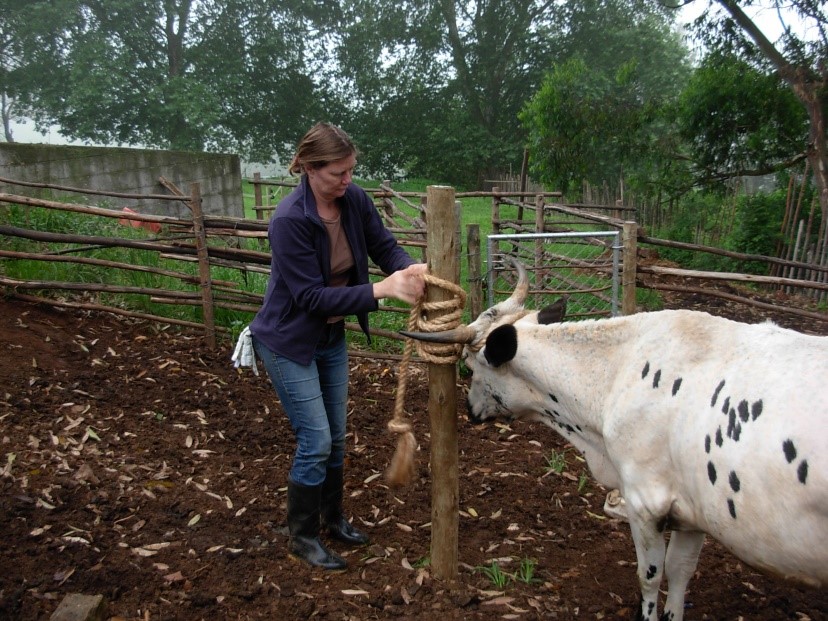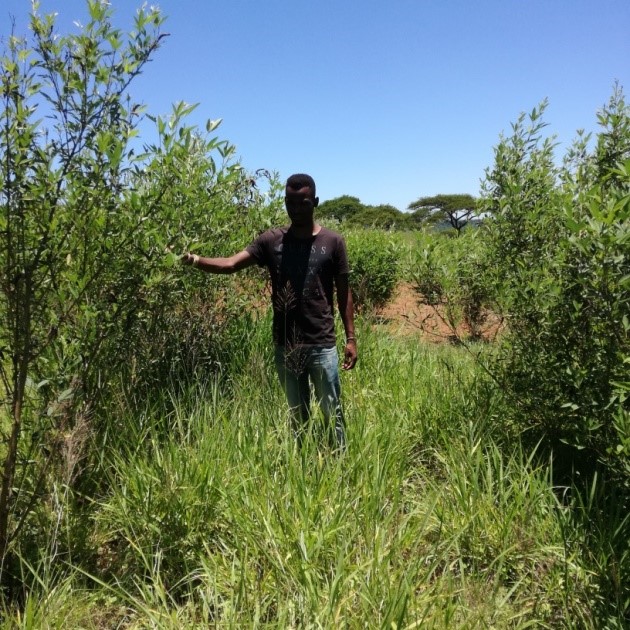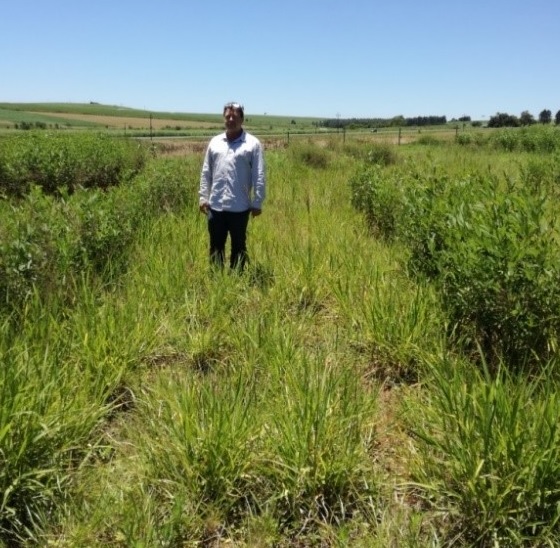
Brigid Letty, a scientist at the Institute of Natural Resources (INR) in the Agriculture and Rural Livelihoods Theme has just graduated with her PhD. She received bursary support from the International Water Security Network (IWSN), through the Advanced Professional and Academic Development Program which is led by the INR, in partnership with IWSN and the Centre for Water Resources Research of UKZN.
Brigid’s PhD builds on an undergraduate Animal Science degree and a Masters through the Department of Range and Forage Science. She is currently involved in a range of agricultural development work but has a special interest in livestock-related projects involving smallholder farmers. Before joining the INR in 2003, she worked for the Provincial Department of Agriculture for a six year period as an animal scientist. Brigid also has a particular interest in grassroots innovation and multi-stakeholder innovation processes, having been closely involved with the international network Prolinnova (Promoting local innovation in ecologically oriented agriculture and natural resource management) for many years, as coordinator of the country platform as well as the subregional coordinator for Eastern and Southern African. Brigid lives on a smallholding outside the small rural town of Richmond in KwaZulu-Natal, where she and her husband pursue their goal of living off the land – with their wide range of livestock and poultry, and a productive vegetable garden.
The title of Brigid’s thesis was Optimising fodder production from Sesbania sesban and pigeonpea (Cajanus cajan) in silvopastoral systems. The research was undertaken as part of a broader project funded by the Water Research Commission titled: Water use of agroforestry systems for food, forage and/or biofuel production (K5/2492//4).

maximum and uncut pigeonpea
Smallholder livestock production in South Africa is characterised by low productivity. The integration of woody legumes into agricultural systems is seen as a useful and affordable way of addressing this, and can be termed silvopastoralism. A key management intervention with hedgerow silvopastoral systems is the repeated pruning of the woody plants to provide a source of fodder and to reduce the competitive interactions between the components of the system for light, water and nutrients, which must also consider the tolerance of the species to this intervention.
The project made use of Sesbania sesban and pigeonpea (Cajanus cajan), which are short-lived woody legumes frequently used in agroforestry systems. Pigeonpea is very drought tolerant and this is an added benefit given the impacts of climate change, specifically erratic rainfall patterns. Alley cropping and silvopastoral systems managed optimally can offer advantages over sole cropping systems (improved water productivity, increased biodiversity, risk avoidance, increased intensification, soil health and enhanced sustainability), but trees compete with understorey crops in alley cropping systems and need to be managed – they also need to be pruned to provide fodder for livestock.

growing between pruned pigeonpea hedgerows
One field trial integrated pigeonpea (Cajanus cajan) in hedgerows with a pasture grass, Panicum maximum, while the other integrated S. sesban hedgerows into maize cropping (the focus being on the production of maize stover for feeding livestock). Different hedgerow cutting heights (60 and 90 cm for pigeonpea, and 50 and 75 cm for S. sesban) were compared against uncut controls and sole understorey crops. A pot trial was also conducted to evaluate five S. sesban provenances harvested from natural populations in northern KwaZulu-Natal in terms of their tolerance of cutting at different cutting heights.
The study concluded that hedgerow silvopastoral systems offer opportunities for smallholder farmers to improve the production of their livestock by providing a source of high quality fodder. However, farmers should adopt a conservative cutting height (not less than 75 cm for S. sesban or 90 cm for pigeonpea) so as to not have a negative effect on browse production and should time their pruning events so as to not expose the woody plants to multiple stresses that reduce their longevity and production.
